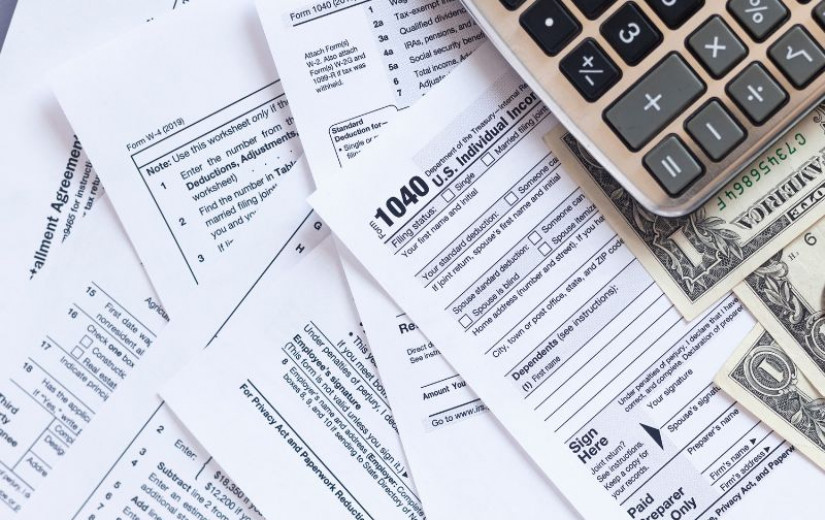
Without sustained economic support and stable housing, survivors—especially Black women—are too often forced back into dangerous situations.

President Donald Trump’s Office of Management and Budget recently targeted 2,600 programs to review for funding cuts, including several that deal with so-called “woke” “gender ideology“—specifically domestic violence. Grants set for pause include the Department of Justice’s Office on Violence Against Women and the Department of Health and Human Services’ Family Violence Prevention Team. This critical loss of support has caused panic among organizations that advocate for domestic violence survivors, now faced with the challenge of providing necessary support without federal aid.
Outside the political realm, the recent reckoning into the history and charges of domestic violence and sex trafficking against jailed music icon Sean “Diddy” Combs, calls needed attention to Black domestic violence survivors. But attention is not enough. Real support is crucial. Domestic violence is not just a safety crisis; it’s a public health and economic crisis that is at risk for funding paralysis.
Finding alternatives to federal funding is an urgent matter during the current administration’s cutting agenda, especially considering the stakes for victims. For the majority of domestic violence survivors across all races, ages and identities, fleeing an abusive relationship is merely the beginning of a long, difficult process. Economic insecurity often forces them into homelessness. With no stable residence, childcare, income and economic resources, many survivors eventually return to their abuser, trapped in a permanent cycle of violence.
The Centers for Disease Control reports that nearly one in two women and one in four men will experience intimate partner violence—including sexual violence, physical violence, or stalking by an intimate partner—in their lifetime.
As the executive director of a nonprofit dedicated to assisting survivors (and a survivor myself), I know a survivor cannot leave a domestic violence relationship without a plan for economic security.
The economic impact on survivors and society is undeniable. According to the CDC, “the lifetime economic cost associated with medical services for IPV [intimate partner violence]-related injuries, lost productivity from paid work, criminal justice, and other costs is $3.6 trillion. The cost of IPV over a victim’s lifetime was $103,767 for women and $23,414 for men.”
Notably, the impact on survivors is not evenly distributed, as the results of IPV are fatal more often in Black communities.
- According to the Violence Policy Center, in 2020, Black women were murdered by men at a rate nearly three times as high as white women (2.96 per 100,000 versus 1.07 per 100,000).
- In 2020, Black women accounted for 14 percent of the U.S. female population, while 31 percent of the women killed by males in single victim/single offender incidents were Black.
In order to end the cycle of violence, we—policymakers, leaders, advocates, communities, funders and individuals—must invest in long-term prevention initiatives, emergency shelters and transitional housing for survivors that will allow them residence for up to three years.
Economic solutions must also offer financial means so survivors can sustain themselves—including survivors’ direct payments, childcare subsidies, housing programs and access to jobs that pay a livable wage.
Many people do not perceive the connection between homelessness and domestic violence, though the issues have been widely documented, particularly in the cases of Black women. Black women are disproportionately among the homeless population due to systemic barriers such as employment discrimination, limited access to money-generating activities, and pay gaps. Because they are already more vulnerable to homelessness, domestic violence only pushes Black women further into a state of housing insecurity.
- According to the National Network to End Domestic Violence, over 50 percent of homeless women report that domestic violence was the main cause of their housing instability.
- A 2020 report from the National Low Income Housing Coalition concluded Black women are more likely to be evicted and struggle to achieve stable housing when they leave an abuser.
To properly support victims in leaving their abusive situations, they must have a stable financial and living situation to move forward with.
Successful models do exist that empower survivors to achieve this stability.
The DV Housing First model has been implemented successfully in Atlanta and Chicago. They offer immediate and permanent housing solutions for survivors without requiring them to be employed at the time of moving in. This action has been proven to have positive outcomes. Organizations like FreeFrom provide economic empowerment programs that promote entrepreneurship through their company, Gifted by FreeFrom, featuring handmade products by survivors of domestic violence. (This program is featured in the new documentary airing across the country, Survivor Made.) Such organizations provide survivors with the means to open bank accounts, repair their credit, and create income-generating activities that allow them to become financially independent.
In 2022, the New York Violence Intervention Program launched a pilot program guaranteeing income for survivors of domestic violence; there is a similar pilot in San Mateo County in California. These projects give survivors a monthly stipend so they can establish long-term stability.
Scaling up such programs on the local and state levels would provide a much-needed safety net.
Clearly, there are solutions proven to work, that could imbue victims with confidence in making the daunting decision to leave. But simply ignoring the economic realities that compel survivors into homelessness or back into harm will never lead to enduring solutions.
Lobbyists, municipal governments and advocacy organizations must prioritize housing, acknowledge that financial stability is key for survivors, and provide cash assistance programs that allow survivors to rebuild their lives.
Survivors deserve more than short-term band-aids—they deserve to live free of violence and homelessness. Above all, they deserve to have resources that will enable them to build a future free from harm and full of possibility.










